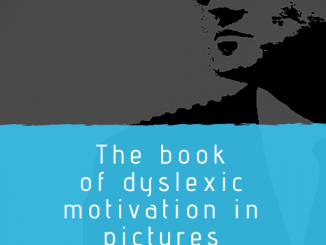
This is an edited transcript of a conversation between Terry Pearce, who works through his business ‘untold play’ to bring the power of play into learning environments, and Sam Warner, ‘The Autistic Interpreter’, who works with organisations to leverage the talents of Autistic people in their workforce and in the pool of talent they’re recruiting from.
Terry: I grew up playing games, I think I played my first game of Dungeons & Dragons at nine, and was playing bridge by 14. They were a big part of how I learned about the world. How big a part of your upbringing did games play?
Sam: I play games every day, and I grew up playing card and board games with my family. I always liked games that made me feel there was something to learn. Cards taught me strategy, planning and maths. I’m not such a fan of Monopoly, though – the dice made it too reliant on chance.
Terry: I totally agree. I’ve gotten in a few debates with people online about my pet hate for Monopoly. I remember feeling bored by having to play on after it was clear who was going to win. I think how games make you feel is really important.
Sam: Completely. I enjoy games with an element of showing what I’m good at, and of confidence boosting when I get things right or win something. And the feeling that I’m learning. As an autistic person growing up not knowing I was autistic, I look back and think I learned things over and above what the game intended, and that made me feel good. I learned how to take turns instead of grabbing centre stage. How to take not winning – my parents would never just let me win – and how to deal better with different human behaviours, like my brother cheating.
Terry: Yeah, I’m fairly sure my brother did, too. We’re already talking about how non-learning games helped you to learn. What about games where learning was at least part of the intention?

Sam: I really liked Dr Kawashima on the Nintendo DS – addictive, rewarding, competitive. It was really clearly explained, and the gradual increase in toughness of the levels kept me challenged and encouraged me every day to form new habits. I think it improved my IQ and mental arithmetic, and that’s stayed with me.
Terry: That’s great. I think that balance of new levels providing the right new level of challenge is one of the cornerstones of the power of games.
I’m really interested in how far you feel that your own experiences and preferences generalise to other Autistic people – I’ve heard it said that there can be more difference between one Autistic person and another than between a given Autistic person and a Neurotypical person.
Sam: Yeah, Autistic people are so different to each other – just like non-Autistic people. You get artistic leanings, or science geeks, or people who do both. One size will never fit all. I think – as far as you can generalise – there are some patterns. But the worst thing you can do is make assumptions and say, all Autistic people are like this, or will like this.
Terry: So how can learning game designers and similar folk account for this?
Sam: I think consultation with the audience is key. You potentially cut out one-third of your audience when you model things just for non-Autistic people.
Terry: Nothing for us, without us. And that’s good game and learning design practice, anyway. It’s going to help everything you do land well with your audience if you prototype and test with them.
Sam: Yes, I think that’s important to say – a lot of the things that are going to help Autistic people are going to help non-Autistic people too. Lots of non-Autistic people learn similarly to Autistic people. And of course there are a lot of undiagnosed Autistic people, too.
Another thing I’d like to see more of is people offering as many different options as possible for learning, whether it’s games or something else. Even though all Autistic people are different, what they often have in common is that they can find things that are designed just for Neurotypical people challenging. The specific things that are challenging may be different, but you can get round that to some extent by giving them choices. Different formats, more or less visual, more or less active, but also just different.
Like controls. Take Microsoft programs – there are several ways to do anything: menus, the ribbon, quick keys… the sense of choice is really helpful, the autonomy of being given choices.

Terry: Well, autonomy is a huge plank of intrinsic motivation for good game design. Like the choices in Choose Your Own Adventure books.
Sam: Or Black Mirror’s Bandersnatch! I loved that.
Terry: Me too! I followed through to most of the endings.
So okay, there are some good design principles that can also steer us well for considering the needs of Autistic people. But, if we preface everything in the next part of out conversation with ‘there are as many differences as similarities and we shouldn’t make assumptions’, are there any patterns that are, shall we say common, in how Autistic people interact with games, in your experience? Any that might be helpful to address?
Sam: There are some I see often, but yes, we need to make sure we don’t turn them into stereotypes. Abstract concepts can be tricky sometimes, or a lack of clarity about how to win. Also reliability. I want to know that a rule or technique I learned always works.
Interpreting what Neurotypical people say, and some of the non-verbalised messages in particular, is a common challenge for many Autistic people. So for instructions or for people facilitating learning games or experiences, to be clear, to mean what you say and say what you mean.
Also, I think Autistic minds are often looking for patterns, things they recognise – again that’s all minds, but maybe a tendency to do it more for many (but not all) Autistic minds. So, variations on an existing pattern of play as a game progresses in level is good.
Terry: Like with Dr Kawashima.
Sam: Exactly.
Terry: There’s a game that does that amazingly well; it’s not a learning game, but a puzzler called The Witness; I’ve seen a few articles written by Autistic people saying how well it worked for them[1], and the link with patterns building was very strong. I think that game could be a good inspiration point for people wanting to design well for many Autistic people.
Sam: I’ll have to check it out.
Terry: Anything else, in terms of patterns?
Sam: Maybe something around emotions; controlling and interpreting emotions in the self and others. Many Autistic people can find that a challenge. An over-reliance on emotional intelligence in a game where it’s not really necessary could be a problem. On the other hand, games can really help develop these skills in Autistic people. They helped me.
Terry: Yes; Jane McGonigal references a number of studies[2] in her book SuperBetter[3], where multiplayer videogames increase co-operation and social intelligence. She also talks about games helping develop a theory of mind, which is part of emotional intelligence. This was with children, though.
Sam: Right, but nothing about Autism stops at 16. Except maybe some of the support and recognition.
Stress is also a common factor. High levels of stress. So games should really lower that stress, and should avoid too much pressure. Because stress levels may already be high, a challenge too far could make some Autistic people give up in frustration a little more easily than a Neurotypical person.
Terry: There’s some great stuff there. So long as we keep in mind that the golden rule is consult, not assume, right?
Sam: Right.
Terry: What about any learning or games designers who might be thinking, ‘I’d really like to design something to raise awareness around Autism, or to help Autistic people’? What would you say to them? Is there anything you’d really like to see?

Sam: Maybe something to improve facial expression recognition – roleplay scenarios where you have to guess what’s going on and you get rewarded for guessing correctly. Or emotional intelligence development: how to manage strong emotions for what’s acceptable in society, so you can enjoy holding down a job. Converting direct language into non-Autistic language, too.
But conversely, apps for non-Autistic people to understand Autistic people and their potential difficulty with emotional intelligence, facial recognition, sensory sensitivity, overload, meltdowns, language, etc. It works both ways – it’s not just for Autistic people to do all the work.
Terry: That’s a great point. And is there something we should also consider about how this shouldn’t all be about just addressing the difficulties that Autistic people face, but harnessing their strengths to improve games and workplaces?
Sam: Absolutely. That’s a huge part of what I do. So, Autistic minds can often be great with problem solving, because they often see things very differently, and more perspectives bring more solutions. They can often also be great at concentrating, if left alone. Again, designing for difference is going to reap rewards.
Terry: I think that might end up as part of our title. Sam, it’s been really thought-provoking for me, and this conversation is definitely going to be rattling around in my mind in future when I’m designing. Thank you.
Sam: And for me. And fun, too.
Terry: Definitely. That’s a gamification maxim: don’t forget the fun[4].
[1] http://thewayofgivingway.blogspot.com/2016/07/the-witness-window-into-autism.html; https://legacy.zam.com/story.html?story=36663
- Using Games to Sculpt Agency - 22nd November 2022
- Gift Horse Download - 25th April 2022
- Dungeons & Dragons & Development - 21st April 2022
- Designing for Difference – Autism and Games-based Learning - 12th August 2020





I just found this interesting project/resource that anyone who appreciates this article should find interesting:
https://itch.io/jam/neurodiversity-in-games-jam
Thanks for the link Terry. Really interesting and useful.